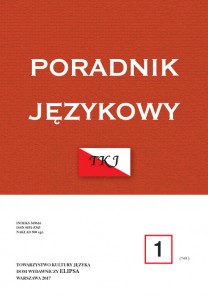
We kindly inform you that, as long as the subject affiliation of our 300.000+ articles is in progress, you might get unsufficient or no results on your third level or second level search. In this case, please broaden your search criteria.

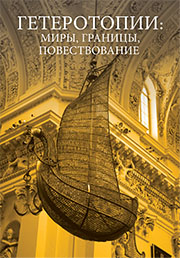
The situation of heterotopia naturally appears in the areas in which multinational cultural and historic context creates premises for ambiguous choice of interpreting the message text, i.e., the areas where the common interpretative convention does not exist. Such premises have been a typical peculiarity of some parts of Central Europe, since the moment of the formation of national civilization structures up to the present time. In frontier areas the relations between centre and periphery are more complicated than the binary centric model “centre – outskirts” which presupposes reproducing the messages of the centre in terms of outskirts. The article deals with the application of the concept ‘heterotopia’ to the field of metric and semantic analyses of rhythmically ambiguous and semantically vague texts. As an example N. Aseev’s poem “Pliaska” (“Folk Dance”) is under consideration. The poem is of interest due to its rhythmical characteristics, as well as to its content and lexical choice, including that of proper names, which indicate the author being influenced by poetical and historic realia of Balto-Slavonic border areas (“kresy” in the Polish language). The poem is analysed in a wide context of Slavonic (Russian, Ukrainian, Belarusian, Bulgarian and Polish) poetry. The paper also touches upon a Slavonic versification universalia, the so-called hexasyllabic verse consisting of two (rarely three) phonetic words. Such type of verse in the context of Russian poetry is usually regarded as exclusively Ukrainian by its origin and as a bright sign of stylization of this kind. The article proposes another interpretation of hexasyllabic verse, namely as a sign of Balto-Slavonic heterotopia.
More...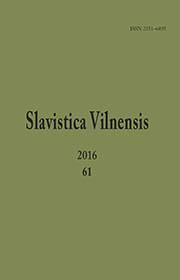
The aim of the article is to present contemporary Belarusian dialects functioning in Eastern Lithuania (in the regions of Ignalina and Švenčionys), which have not been the subject of comprehensive linguistic research. The basis for the analysis are the author’s own materials, which were collected during field research in 2014-2016. The structure of these Belarusian dialects (selected features in phonetics, morphology, syntax, vocabulary and phraseology) as well as the sociolinguistic aspect of their functioning in a multilingual environment are demonstrated in the article.
More...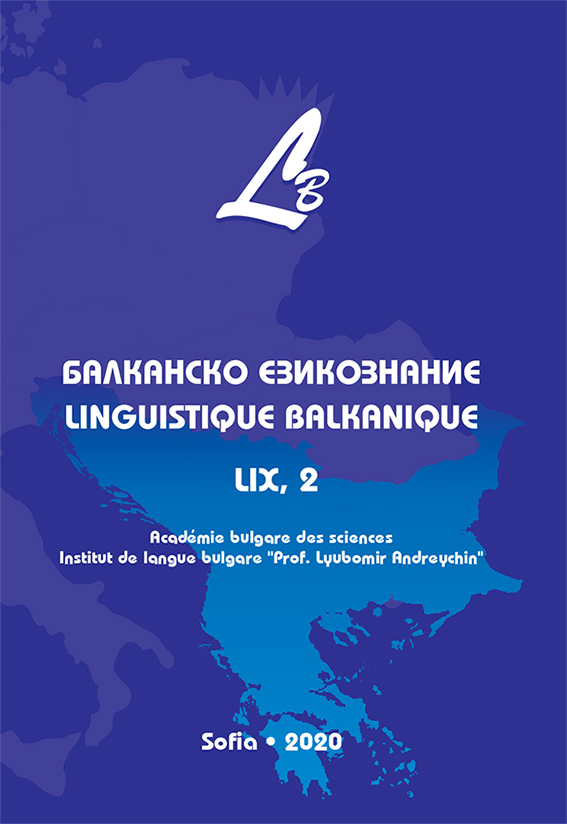
Back in 2008, a marble relief votive to an unknown deity was unearthed on the archaeological site called Grobljište in the village Nozrina, not far from the town Aleksinac in East Central Serbia. The relief was found broken into three segments and fragmented. The Greek votive inscription is visible on the bottom part. These fragments are currently kept at the National museum in Kruševac, as a part of their Collection of antiquities at the Department of archaeology. The deity depicted on the relief was interpreted by researchers as “Sol-Helios (which is considered to be identical to Apollo)”. This votive relief and the personal name of its dedicant, ΗΡΟΔΟΤΟΣ, was published in the literature, but the inscription on the relief was left out. Originally, the inscription was not dated. It is written in the Greek majuscule cursive, and in accordance to the shapes of the inscribed letters, this form of the alphabet could be most approximately (we underline most approximately) assigned to the end or the second half of the 1st c. A. D.. In this way, the inscription, that is the votive relief itself, might also be most approximately (we underline most approximately) dated to the end or the second half of the 1st c. A. D., and thus the Greek language of the inscription might be the Hellenistic koiné.
More...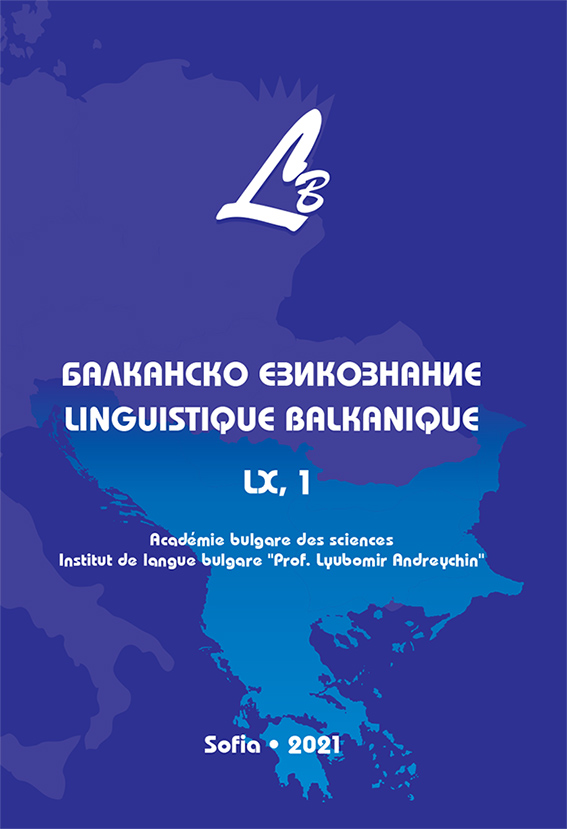
Prof. Yordan Zaimov, Dr. Sc. is born on 23rd of April 1921 in Sofia. He graduated Slavic Philology at Sofia University “St. Kliment Ohridski” in 1944. He has the opportunity to be taught by some of the most prominent scholars. His brilliant linguistic knowledge (he spoke eight languages) will be the basis for his future notable success in some of the most difficult scientific fields such as etymology, onomastics, and diachronic linguistics. All his activities are connected completely with the Institute for Bulgarian Language at the Bulgarian Academy of Sciences. Significant moments from his life, dedicated to knowledge, are going to be presented as well as from his multidisciplinary work.
More...

This article describes the linguistic function of sound bite phrases in the discourse of two Latin-American left-wing politicians, Cristina Fernández de Kirchner in Argentina and José Mujica in Uruguay, and analyzes the echo that these phrases have in the media. The purpose is to study whether their usage in the media-political scenario is a phenomenon with identifiable idiosyncratic discursive mechanisms.
More...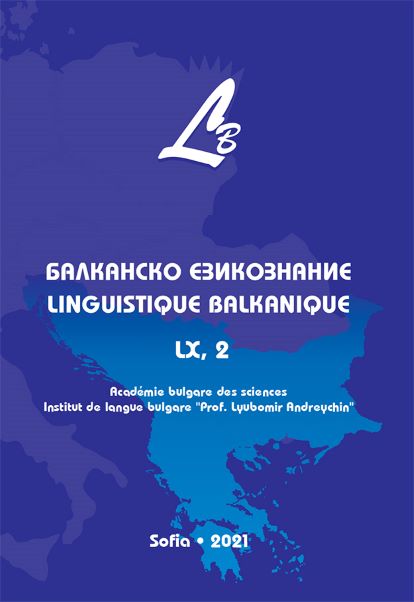

In the report the author explains his aspired project of the edition of Edward Sapir’s Comparative dictionary of Indo-Chinese and Na-Dene, kept as a manuscript in the Franz Boas estate in the library of the American Philosophical Society in Philadelphia. The manuscript forms one volume of Sapir’s Comparative dictionary of Na-Dene languages.
More...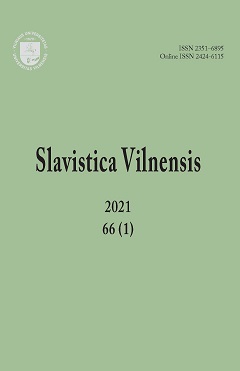
The aim of the article is to present contemporary Belarusian dialects in south-eastern Lithuania (in the Vilnius region), which have been the subject of linguistic research but not comprehensive. The basis of the analysis is mainly the author’s own materials, materials taped by other dialectologists and dictionary entitled Слоўнік беларускіх гаворак паўночна-заходняй Беларусі і яе пагранічча. The structure of these Belarusian dialects (selected features in phonetics, morphology, syntax, vocabulary and phraseology) as well as the sociolinguistic aspect of their use in a multilingual environment are demonstrated in this article. The analysis of the collected material shows that the structure of Belarusian dialects in the study area is well-preserved. Belarusian dialectologists regard the Belarusian dialect in Vilnius Region as a southwestern dialect, which should be described in detail. In the statement of interlocutors, one can note the phonetic, morphological and syntactic features typical for: the south-western dialect, the Central Belarusian subdialects, the Grodno-Baranavichy group of the south-western dialect and the two so-called dialectal zones: western and north-western. Local Belarusian dialects have been influenced by Baltic and Polish for hundreds of years and we can notice numerous borrowings from these and their dialects.
More...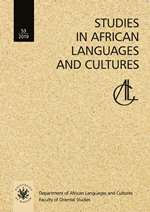
The present paper analyzes the system of laughter-based interjections (L-INTJs) in Xhosa. By drawing on corpus and fieldwork evidence, the author concludes the following: the systems of L-INTJs consists of five types of constructions built around the segments ha, he, ho, hi, and yha, the satellites te and ti, as well as a number of replicative templates. The pattern hVhVhV with a short vowel is the most productive. Other replicative patterns, patterns involving (extra‑)long vowels, and the pattern tVhV are less productive. Overall, L-INTJs are the canonical members of the interjective category. The presence and range of uses of L-INTJs result from the interjectionalization of laughter-based onomatopoeias or the onomatopoeization of non-laughter-related interjections.
More...
In this article, Dürr-i Meknun’s grammatical properties has studied. Dürr-i Meknun was written in Old Oghuz Turkish which is the most important periods of Western Turkish. It is an encyclopedia for the period in which was written due to the richness of its contents. Period of this book is a transition period between the Old Oghuz Turkish to advanced literary language which was called Ottoman Turkish. In this study was aimed to introduce of a transition period’s book’s grammatical properties. The place of the book in our cultural history was tried to be reminded by giving general information about the book and the author. Because of this book has been studied before, in this study only the prominent phonetic and morphological properties of the period are emphasized it is aimed to emphasize the transition period properties that characterize the period. In accordance with the characteristics of the period, the book appears to have gived point to the features of the Ottoman Turkish literary language.
More...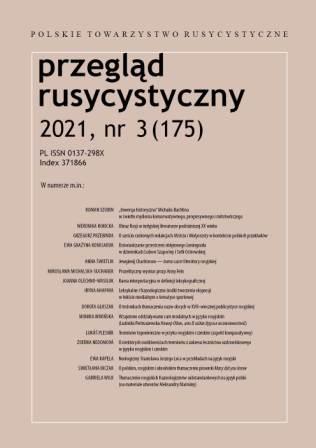
The following paper presents techniques that arise in translating nouns of foreign origin in Russian opinion journalism. Translational texts published under the common name of Vesti-Kuranty served as the source. The material for analysis was extracted from all available editions of the manuscripts produced in 1600–1670. The article aims to present selected techniques used by 17th century translators that were meant to serve as prompts for understanding words unknown in Russian at that time and demonstrate different translation solutions aimed at introducing foreign phrases and values.
More...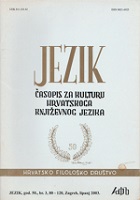
The paper deals with the issues of lexical-and-semantic standards, in particular those concerning loan-words but with a special emphasis on anglicisms, that can be found in the current usages published in the 1990s. The anglicisms, taken from Croatian language guides, are listed first. Then the principles of regularity, used by the authors in suggesting their Croatian equivalents, are analysed. There is a question - whether the authors were too puristic, i. e. how much are the suggested equivalents acceptable and how much are they accepted?
More...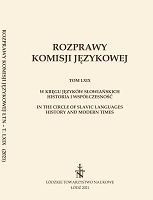
The article presents an analysis of the peculiarities of the origin of the secondary form дрозки ‘rolling pin’ and highlights the specifics of the existence of variant forms of the noun in the Ukrainian language from the end of the 19th to the end of the 20th century. The analyzed word is a phonetic variant of the literary noun друзки , which is a loan translation of the Polish noun used in the construction rozbić w druzgi . The adaptation of the Polish phrase in Western Ukrainian dialects led to the emergence of the noun дрізки , which is a literary variant of the noun друзки . In the east, Ukrainian dialects mostly retain the form of друзки , which in the 17th century, as a result of analogy, changed to дрозки . The change took place in the Poltava region, from where a new phonetic form as a component of the construction of побити на дрозки extended into the adjacent territories. Sporadically written texts recorded the analyzed name before the early 1930s, but later the noun дрозки became obsolete in the Ukrainian language.
More...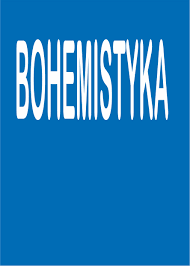
The paper represents a brief inquiry into the occurrence of neologisms, borrowings and international terms used in the Czech language, strictly bound by the contemporary covid-19 pandemic events. The employed examples include both, older borrowings, fully domesticated in Czech, as well as the new ones, not yet recorded in any of the reliable printed Czech dictionaries. It focuses mainly on borrowings of Greco-Latin adstrate but also on loanwords of Romance origin, Anglicisms and, to a limited extent, loanwords of German origin in Czech. In addition, a small number of examples is represented by the terms of Slavic and Old Czech origin. The article outlines how the currently used lexical units from different source languages function in the Czech language and their level of adaptation to the Czech orthographic, phonological and morphological systems including some of their semantic peculiarities.
More...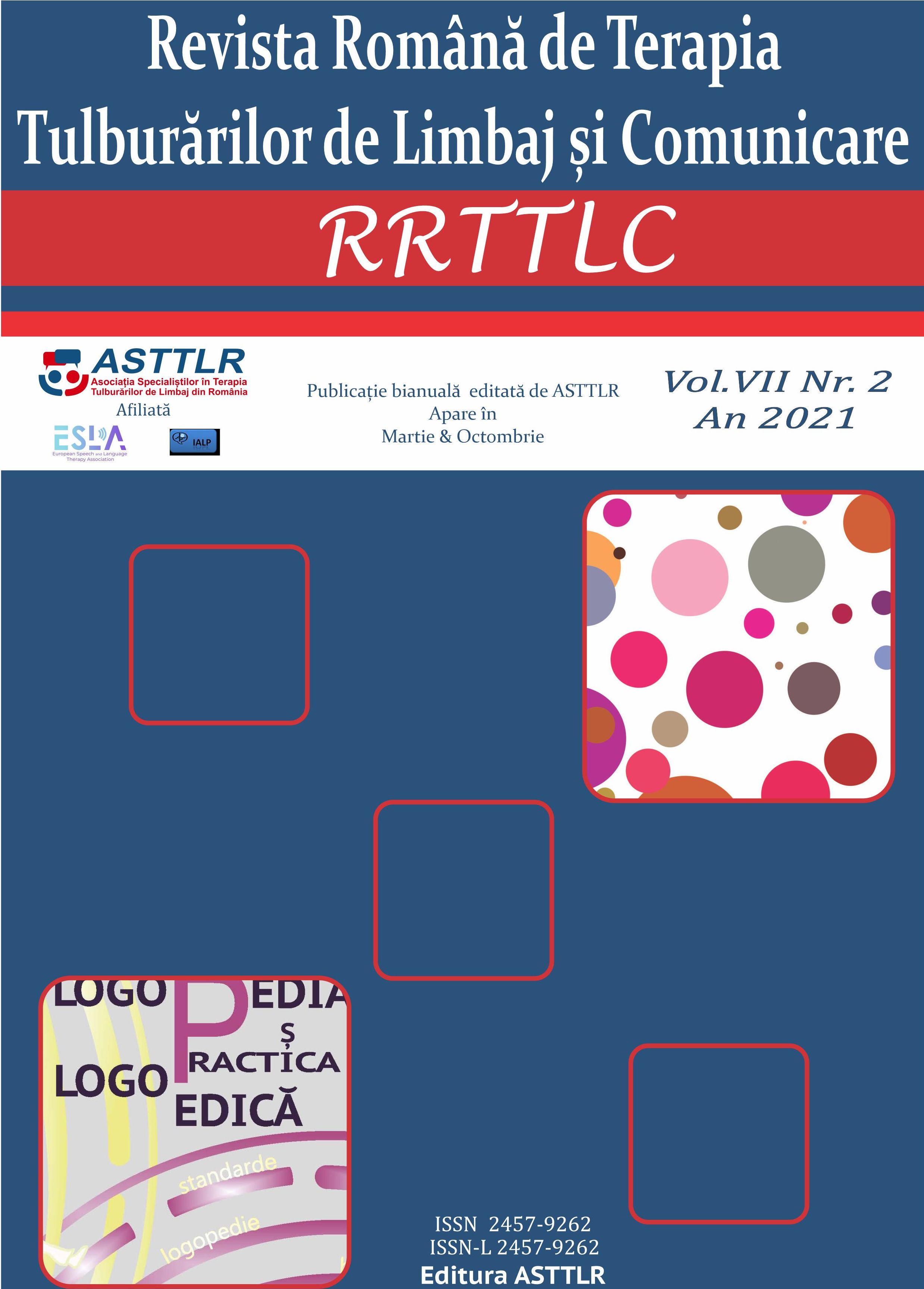
The aim of this paper was to illustrate the approach of speech and language asssessment developed within the Interschool Speech Therapy Centers in Romania (Centrele Logopedice Interșcolare), at the beginning of the school year, in a pandemic context. It presents the initial evaluation of students and preschoolers, but also the way in which the complex evaluation of children identified with speech and language disorders is developed, fallowing the legislation and specific methodology. The Speech and Language Evaluation Scale is a very useful tool at this stage and beyond. This helps to condense the relevant data about children, to formulate the speech therapy diagnosis and to outline the therapeutic approach. The developed model addresses both aspects of psychomotor development and aspects of pronunciation and articulation. It is designed mainly for primary school students, but can also be applied to preschoolers. The presented case study is intended to highlight the way this model can be used, at various stages, in a specific intervention strategy.
More...
The first mathematics textbook printed in Moldavia (Iași, 1795) was not sufficiently examined, although the translation offers us valuable information on the Italian influence on the Romanian language and a precious linguistic material as regards both the configuration of the Romanian literary language in Moldavia at the end of the 18th century and the constitution of mathematical terminology. The linguistic material excerpted reflects phonetic and morphologic norms specific of the author’s dialect, sometimes going beyond the criteria illustrated by the local tradition, especially in the morphosyntax field. The lack of a terminological tradition is to be observed in the high number of un-adapted terms, semantic loans and old terms. Amfilohie’s intense activity of translating from Italian (the scholar being a genuine forerunner of the Italianate movement in Moldavia) is proof of the depths of the cultural contacts with the western world, resulting in the intensification of the renewing of the Romanian vocabulary by assimilating Latin-Romance borrowings in general and Italian ones, in particular.
More...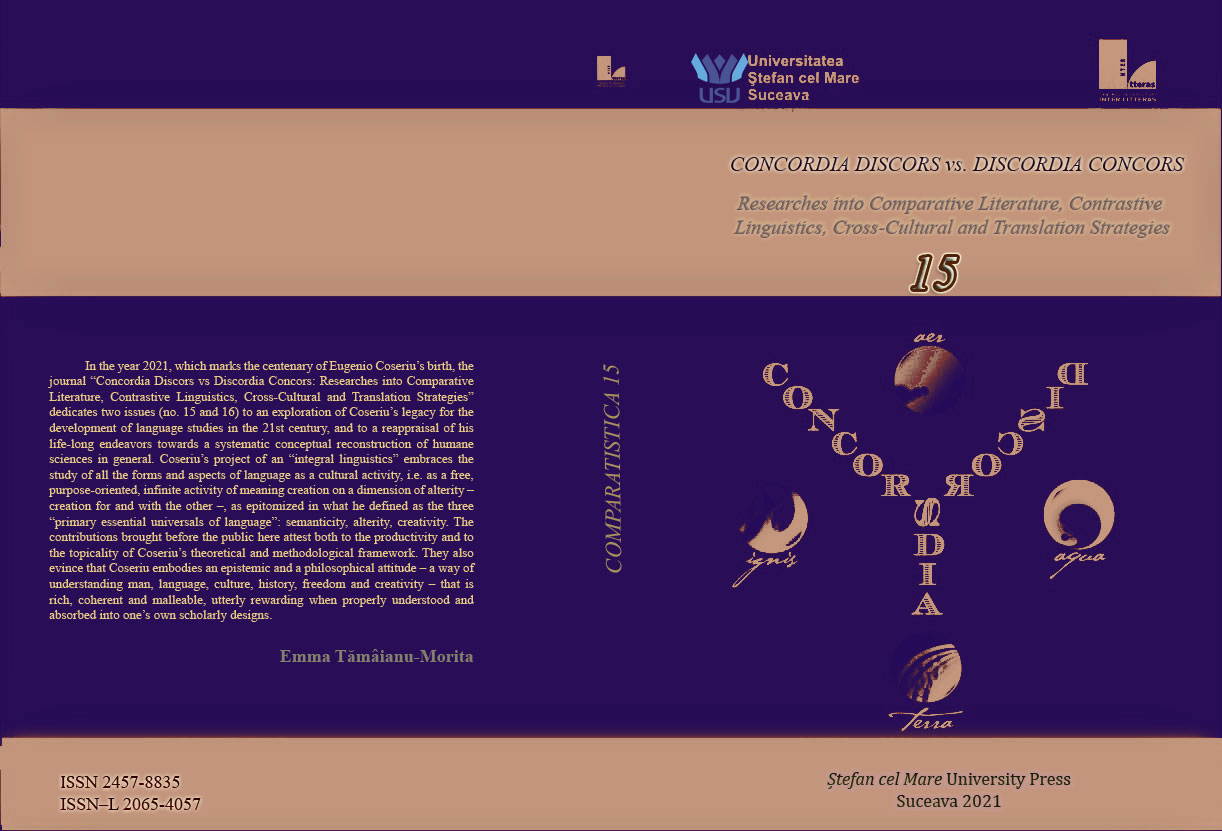
Romance linguistics was one of E. Coseriu‘s primary fields of research; all along his life Coseriu illustrated and tested his theoretical concepts using Romance languages as a touchstone. Likewise, one of Coseriu‘s early predecessors, the Spanish Renaissance philologist B. de Aldrete, came up with a number of innovative ideas concerning the historicity of language, regular changes in phonetics and transformations in morphology, divergencies among closely related languages, etymology, sociolinguistic factors (such as language contacts and cultural integration) in linguogenesis, the importance of early written texts for documenting language change, as well as other concepts, and used the example of Romance languages – the Ibero-Romance ones in particular – to support his theoretical insights. B. de Aldrete‘s treatise (1606) is also an early example of the scientific practice of citing previous research and giving references to numerous sources.
More...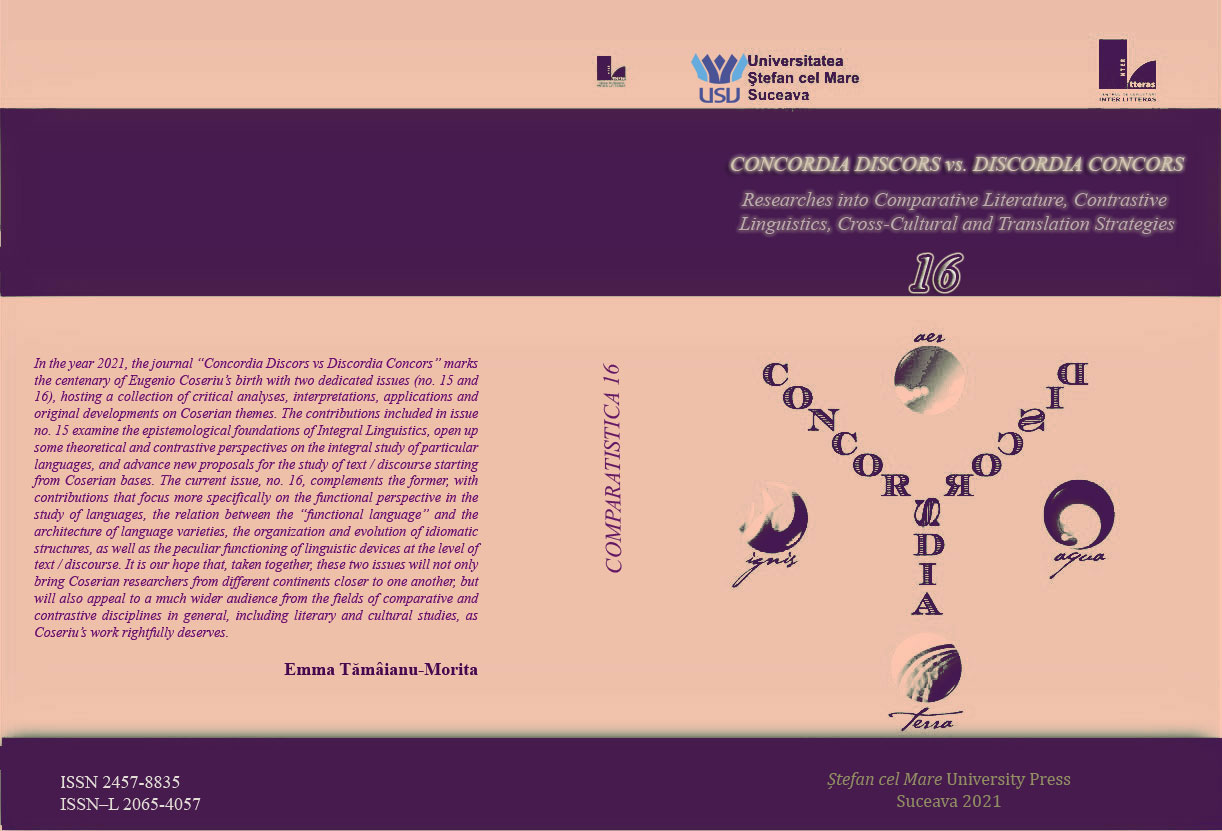
Questo volume è un‘introduzione in lingua giapponese alla linguistica romanza. Il suo obiettivo è chiarire i processi grazie ai quali le lingue romanze si sono formate e sviluppate dal latino (i). In altre parole, si tratta di uno studio sulla diacronia delle lingue romanze o sulla linguistica romanza nel quadro tradizionale, tramandata dal tempo di F. Diez e W. Meyer-Lübke.Shigeaki Sugeta, Professore Emerito presso l‘Università Waseda di Tokyo e autore di questo volume, è un linguista specializzato in linguistica romanza, soprattutto nell‘ambito dell‘italiano e del sardo. L‘autore sostiene da molto tempo l‘importanza dello studio delle lingue romanze minoritarie per conoscere l‘intera storia dei loro sviluppi. Tra i manuali di linguistica romanza pubblicati dai ricercatori giapponesi, abbiamo Shimaoka (1986), Ito (2007), Kobayashi (2019) ecc.1. Rispetto a questi studi, il presente manuale è un‘introduzione ben bilanciata nel senso che guarda non solo alle lingue romanze maggioritarie, ma anche a quelle minoritarie. Inoltre, il capitolo VI tratta la formazione delle parole nelle lingue romanze, argomento che non è stato ancora discusso in maniera soddisfacente all‘interno degli studi pubblicati finora in Giappone.L‘indice di questo volume è il seguente: I. Introduzione, II. Il latino volgare come fonte comune, III. Fonetica e fonologia delle lingue romanze, IV. Grammatica delle lingue romanze, V. Lessico delle lingue romanze, VI. Formazione delle parole nelle lingue romanze, e VII. Proprietà delle singole lingue romanze.
More...